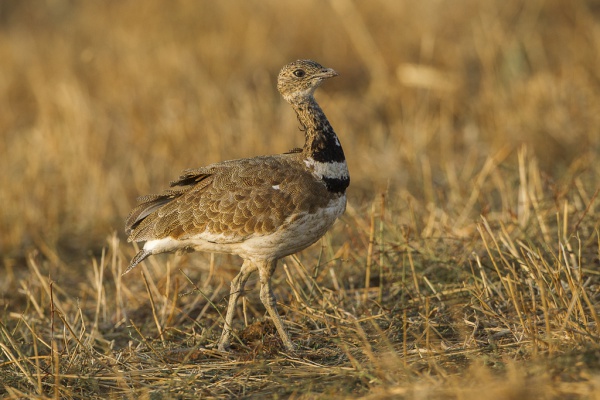Facts About Little bustard
The little bustard, a significant member of the bustard family, is the sole species within the genus Tetrax. Native to southern Europe and western and central Asia, some populations of these birds migrate southward for the winter. Unfortunately, their numbers are declining due to habitat loss.
As the smallest bustard in the Palearctic region, the little bustard measures approximately 42-45 cm in length and weighs around 830 grams. Males are easily identifiable by their brown upper body, white underparts, and a distinctive black neck adorned with white borders. In contrast, females and non-breeding males lack this prominent neck pattern.
Little bustards have a diverse diet, consuming seeds, insects, rodents, and even reptiles. During courtship, males perform elaborate displays, and females typically lay 3 to 5 eggs directly on the ground. They favor open grasslands and undisturbed farming areas for habitat and are known to be social, especially in winter.
Tracking studies have revealed that male little bustards migrate nocturnally, often stopping in croplands during their journey. However, these birds face significant threats, including illegal hunting. A notable incident in the United Nations Buffer Zone saw a little bustard shot by poachers, sparking outrage among conservationists and bird enthusiasts.

 Pakistan
Pakistan